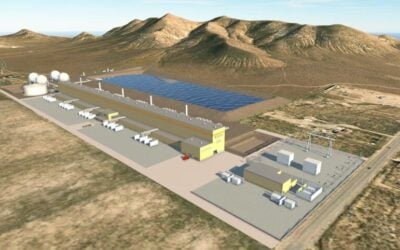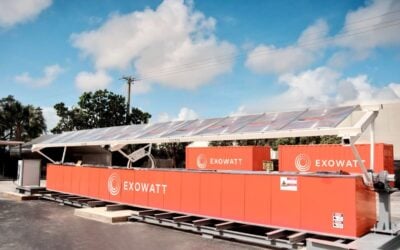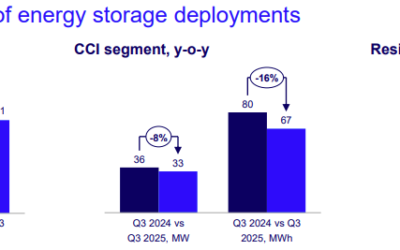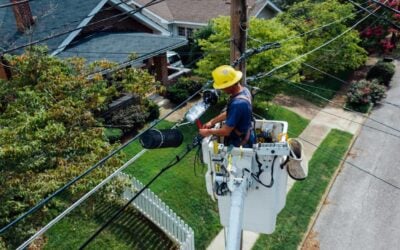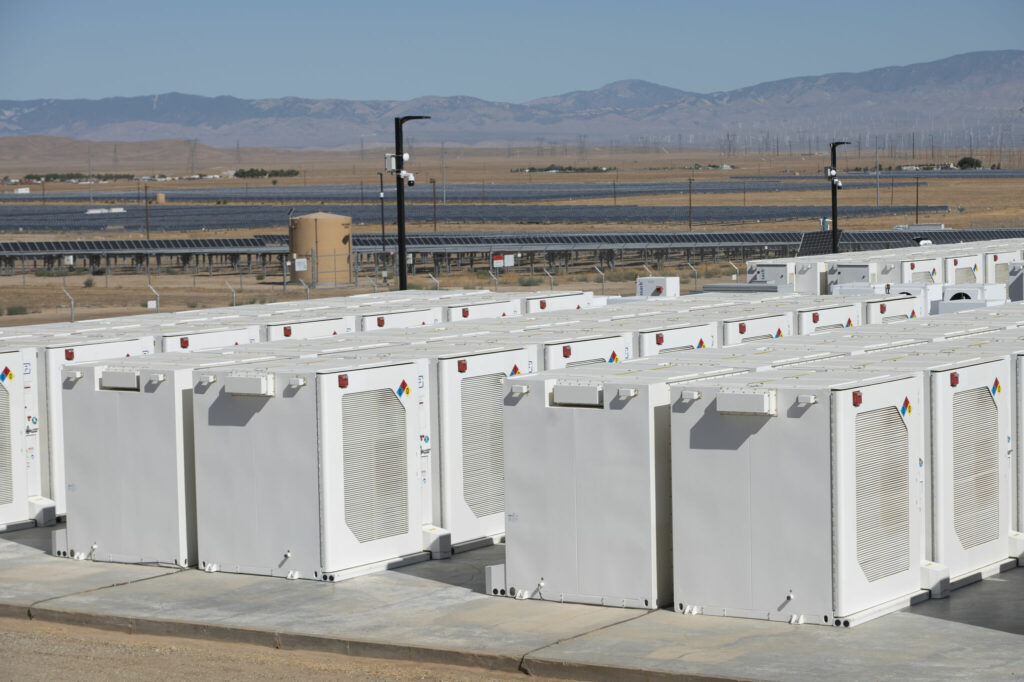
Energy stored in batteries is being dispatched in large volumes in California as record-breaking hot weather in the Western US has brought the state’s electricity sector into crisis.
The California Independent System Operator (CAISO), which manages the grid and oversees electricity wholesale markets for more than 80% of California, has been issuing ‘Flex Alerts’ since August.
CAISO activates the alerts to manage the shortfall of electricity supply versus demand, asking customers to turn down their power usage and bringing as many resources as it can to ramp up supply.
For example, in Mid-August, a Flex Alert signified the first time that a network of 2,500 Tesla Powerwalls, aggregated into a virtual power plant (VPP) in the service territory of California investor-owned utility (IOU) Pacific Gas and Electric (PG&E), delivered up to 16.5MW of stored solar energy to the grid.
Try Premium for just $1
- Full premium access for the first month at only $1
- Converts to an annual rate after 30 days unless cancelled
- Cancel anytime during the trial period
Premium Benefits
- Expert industry analysis and interviews
- Digital access to PV Tech Power journal
- Exclusive event discounts
Or get the full Premium subscription right away
Or continue reading this article for free
While in 2020, utilities enacted rolling blackouts in some areas to protect the grid and last year’s summer period also saw Flex Alerts activated, no one has been under any illusion that margins could continue to be tight. State Governor Gavin Newsom made moves to expedite battery storage deployment through cutting red tape as a State of Emergency was declared last year.
CAISO had said prior to the summer that it expected to have 4GW of battery storage capacity available, mostly from grid-scale, four-hour duration battery energy storage systems (BESS), it hasn’t quite made it that far. However, it is thought to be close to that mark, especially with a few big systems coming online in the past few weeks, like a pair of projects from AES Corporation totaling 227MW/908MWh.
The past few days have seen that fleet in action in a big way.
On 6 September, Jill Anderson, executive VP for operations at another big utility, Southern California Edison, tweeted that it was “incredible” to see battery storage set “record after record of grid support during this intense heatwave”.
The most extreme mismatch between supply and demand generally comes between 7pm and 9pm, in the evening peak. Anderson posted a graph from CAISO showing that around 7pm on that day, well over 3,000MW of battery capacity was discharging to the grid.
“Just now we saw batteries discharging more than double last year & orders of magnitude more than what was available to the grid in 2020,” Anderson tweeted.
The day before (5 September), CAISO had “barely made it through” without rolling blackouts and had relied heavily on battery storage as well as more than 8GW of imports, Ryan Sweezey, a principal analyst at Wood Mackenzie Power & Renewables, said in a LinkedIn post.
The state may not always be able to rely on imports today or in the future, Sweezey said, “but the storage is here to stay,” noting that while on 14 August 2020 when rolling blackouts did occur, storage discharge between a two-hour evening peak window was just 50MW, versus around 2.5GW in the same period on 5 September 2022.
Contribution in California set to grow – and get smarter?
In fact, on CAISO’s ‘Today’s Outlook’ page on its website, users can track the status of demand, supply, emissions and prices, looking at current statuses as well as trends. It makes for fascinating, if unapologetically nerdy, viewing.
That shows that while the relative contribution of batteries may be small compared to say renewables, large hydro, natural gas and imports from other states, its role as a dispatchable resource is an important one in closing that supply-demand gap.
It’s not just large-scale batteries either, as that earlier Tesla reference showed. In 2021, smart energy storage and software provider Stem Inc said it dispatched more than 500MWh from customers’ commercial and industrial (C&I) battery systems enrolled in grid services programmes during June heatwaves. Stem’s fleet isn’t just in California, but most of it is.
At the end of August this year, residential solar PV and energy storage installer and leasing company Sunrun sent media including Energy-Storage.news a press release claiming that it was dispatching more than 80MW of stored battery capacity from customers’ homes into the CAISO grid every day.
That’s more than several of California’s fossil fuel peaker plants, and an increase of more than 60% from 2021, the company said.
Despite the increasingly important role of batteries, there are still some inefficiencies in market design to resolve that can help them contribute even more.
Cody Hill, an engineer and senior VP at energy storage developer and operator Rev Renewables noted that one of Rev Renewables’ battery projects dispatched at a time of day when day-ahead market caps rose above a threshold.
However, the more serious need for energy came later than that, by which time the 125MW system was already discharged and unable to contribute, Hill tweeted.
An article for Vol.31 of our journal PV Tech Power, published in the second quarter of this year, looked at the role large-scale battery storage plays on the grid today, with reference to key battery storage market regions like California’s CAISO, Texas’ ERCOT grid, the UK and Ireland, Western Europe and Australia.

